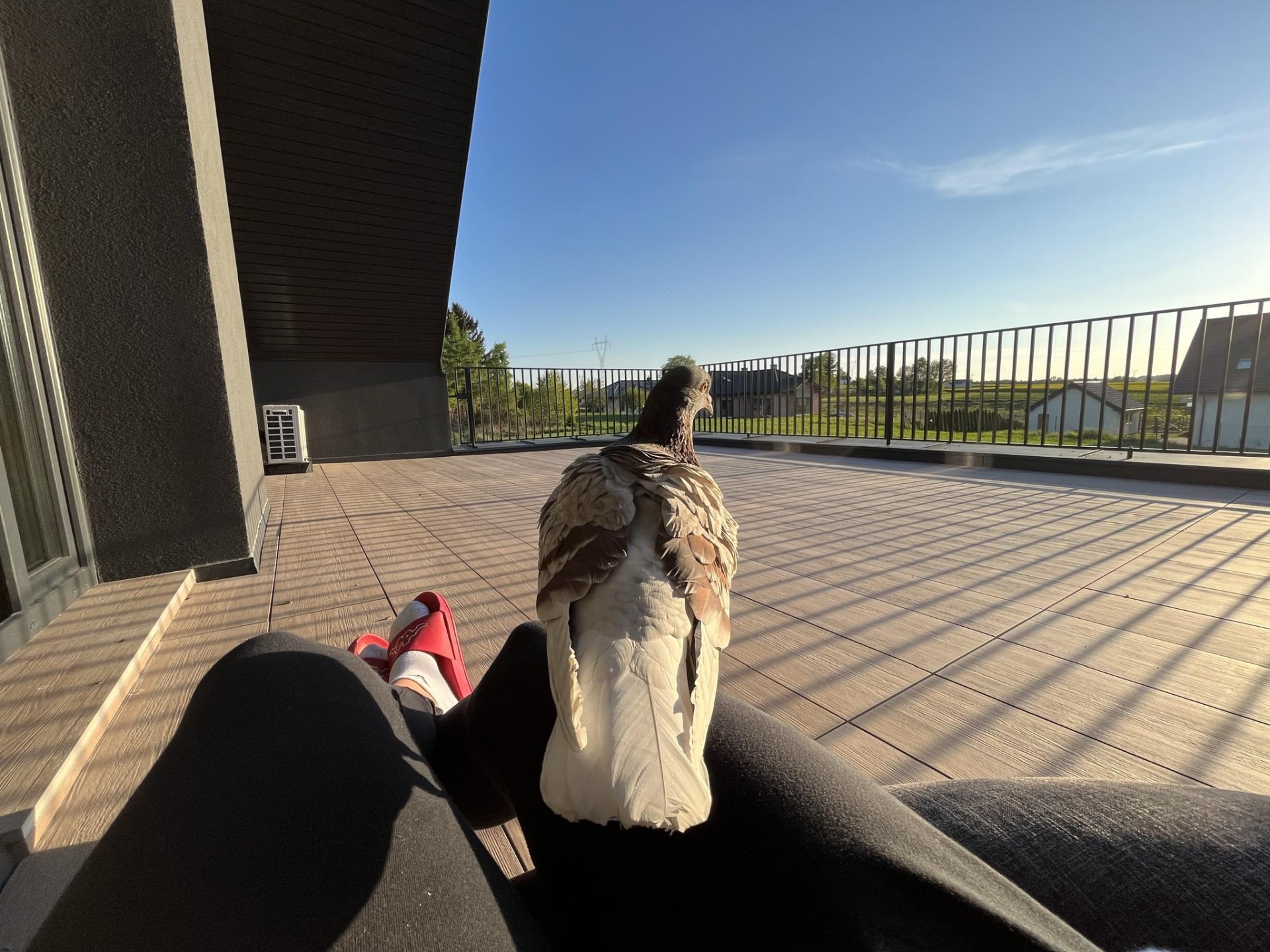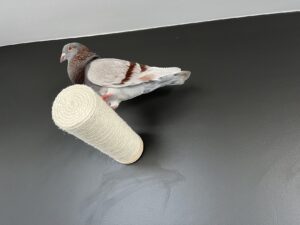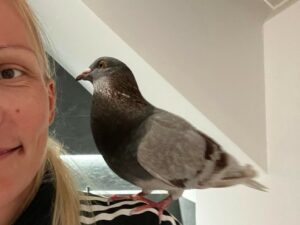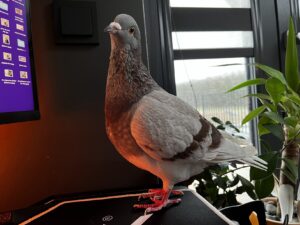Pigeons are birds that we see almost every day, flying in the sky or walking around in parks. But did you know that there is a special type of pigeon called a homing pigeon? These birds are not just ordinary pigeons; they have an amazing ability to find their way home over long distances. For many years, people have been fascinated by homing pigeons and have used them to carry messages and even compete in races. In this article, we are going to explore what exactly a homing pigeon is, learn about their history, understand how they live and behave, and discover the science behind their incredible sense of direction. So, if you’re curious to find out more about these extraordinary birds, keep reading!
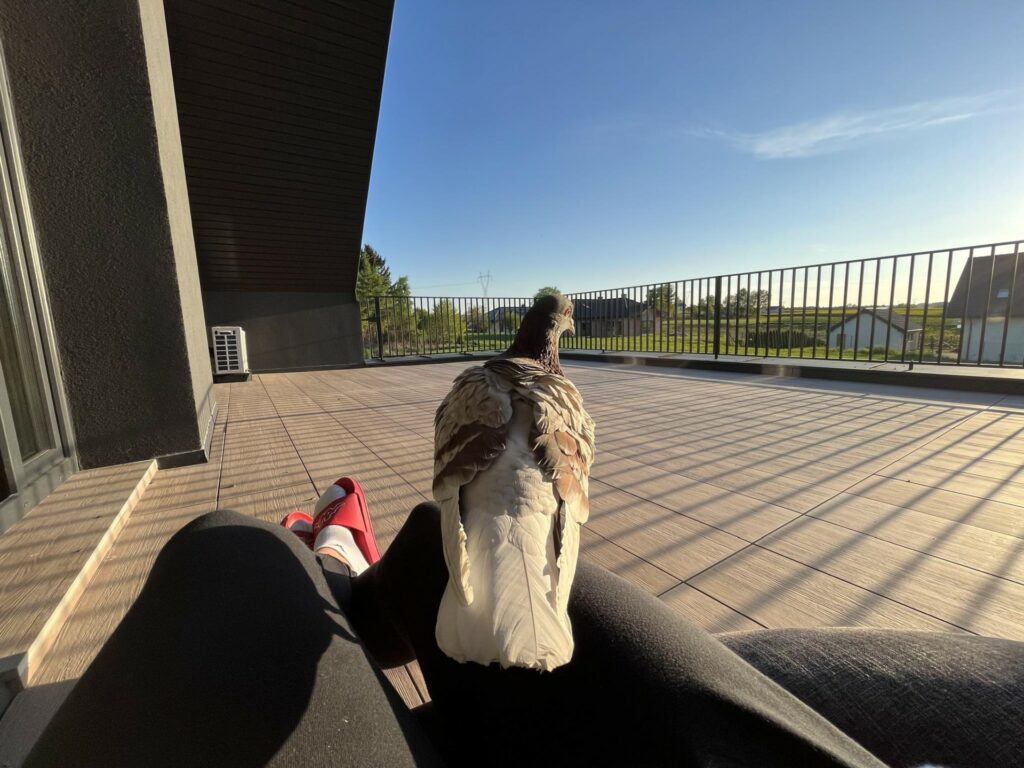
What is a Homing Pigeon?
Historical Significance of Homing Pigeons
Homing pigeons have played a significant role throughout history, serving humans in various capacities due to their unique ability to find their way home over long distances. Here’s a detailed look at their historical significance:
Use in Ancient Civilizations:
- The use of homing pigeons dates back thousands of years.
- Ancient Egyptians and Greeks used these birds to send messages and important information across long distances.
- In Ancient Rome, homing pigeons were used to announce the winners of the Olympic Games to people living far away.
Role in Both World Wars:
- During World War I and World War II, homing pigeons were used extensively for communication, especially in areas where other forms of communication were not possible.
- These birds carried critical messages across enemy lines, helping to coordinate military efforts and save countless lives.
- Some pigeons were even awarded medals for their bravery and service during the wars.
Famous Homing Pigeons and Their Contributions:
- Cher Ami: This famous pigeon served in World War I and is credited with saving the lives of 194 soldiers. Cher Ami delivered a message over 25 miles in just 25 minutes, despite being injured, leading to the rescue of the trapped soldiers.
- G.I. Joe: Another heroic pigeon from World War II, G.I. Joe flew 20 miles in 20 minutes, delivering a message that prevented a planned bombing, saving both the village of Calvi Vecchia in Italy and the lives of the people living there, as well as the soldiers who were in the area.
- Winkie: During World War II, Winkie was aboard a bomber plane that crashed. The crew released Winkie, who flew home, leading rescuers back to the crew and saving them.
These examples highlight just a few of the ways in which homing pigeons have made significant contributions throughout history, showcasing their value, intelligence, and loyalty to those they serve.
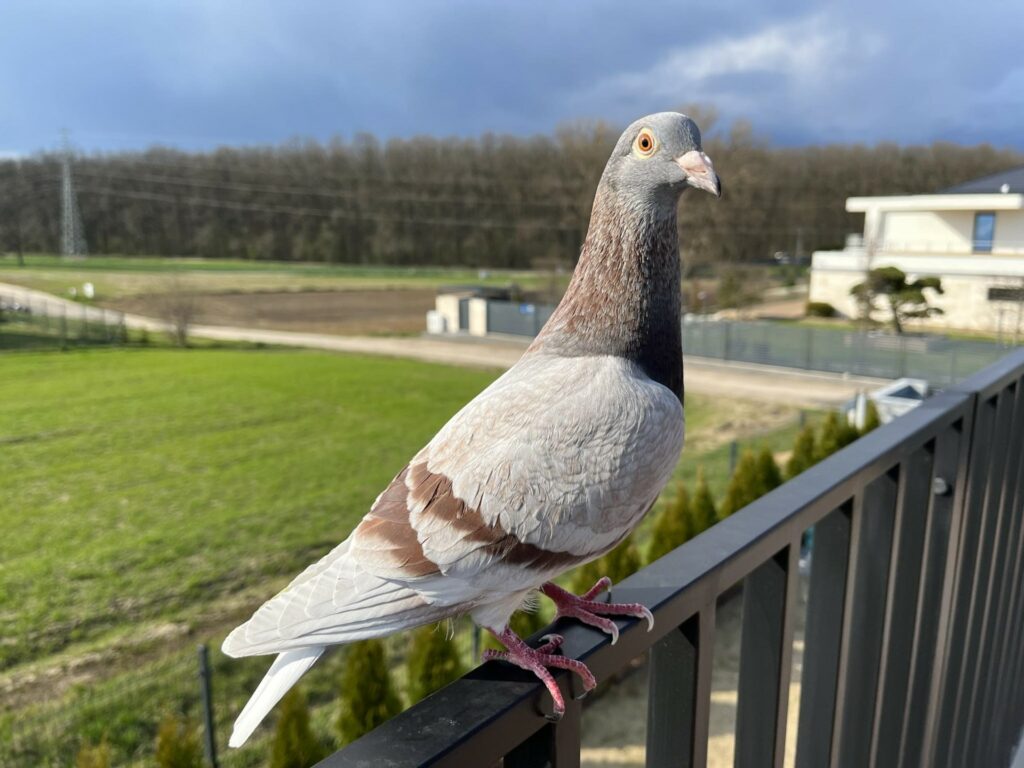
Biology and Behavior of Homing Pigeons
Homing pigeons are fascinating creatures, not just for their ability to find their way home, but also for their unique physical characteristics, behaviors, and life cycle. Let’s delve into these aspects in more detail:
Physical Characteristics:
- Homing pigeons are medium-sized birds with a sturdy build.
- They have strong wings and are excellent flyers, capable of covering long distances.
- Their feathers are usually gray, but they can also be found in a variety of colors and patterns.
- They have keen eyesight, which helps them navigate and find their way home.
Lifespan and Breeding Habits:
- On average, a homing pigeon can live for about 6 to 8 years, though some may live longer with proper care.
- They usually start breeding at the age of six months and can continue to do so for several years.
- A pair of homing pigeons can raise several broods of young pigeons, or squabs, each year.
- The squabs are fed a special secretion known as “pigeon milk” produced by both parents.
Training and Homing Instincts:
- Homing pigeons are known for their strong homing instincts, which means they have a natural ability to find their way back home over long distances.
- These instincts can be honed through training, starting with short distances and gradually increasing as the bird becomes more experienced.
- The training process helps to strengthen the bond between the pigeon and its home.
Check my article about How Did Messenger Pigeons Know Where To Go?
Navigation Skills and How They Find Their Way Home:
- Scientists believe that homing pigeons use a combination of visual, magnetic, and olfactory cues to navigate.
- They are thought to use the sun as a compass and the Earth’s magnetic field as a map.
- Pigeons also have a highly developed sense of smell, which helps them recognize familiar scents and landmarks near their home.
- Some researchers believe that pigeons may also use infrasound (low-frequency sound that is below the range of human hearing) and even the stars for navigation.
In summary, homing pigeons are remarkable birds with unique physical characteristics and behaviors that enable them to navigate across long distances and find their way home. Their strong homing instincts, combined with training and a keen sense of the world around them, make them extraordinary navigators and companions.
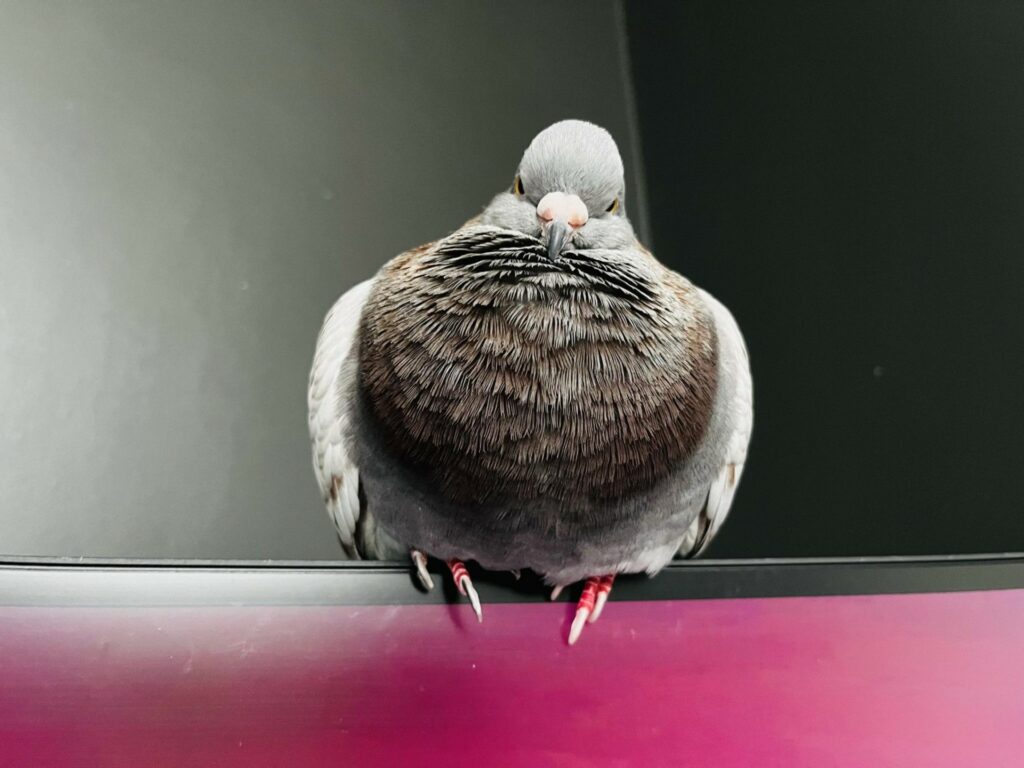
What is a Homing Pigeon? The Science Behind Homing Pigeons
The remarkable ability of homing pigeons to navigate across vast distances and find their way back home has long captivated scientists and researchers. Numerous studies have been conducted to unravel the mysteries of their navigation skills, leading to various theories and interesting findings.
Studies on Pigeon Homing Abilities: Over the years, scientists have conducted various experiments to understand how pigeons are able to home with such precision. These studies have involved releasing pigeons from unfamiliar locations and tracking their journey back home. Some experiments have tested pigeons under different conditions, such as altering the magnetic field around them or releasing them in areas where the sun is obscured, to observe how these factors affect their navigation abilities. These studies have provided valuable insights into the complexity of pigeon navigation and the factors that influence it.
Theories on How Pigeons Navigate: There are several prevailing theories about how homing pigeons navigate. One theory suggests that pigeons use the Earth’s magnetic field as a guide, sensing changes in the magnetic field to determine their position and direction. Another theory proposes that pigeons rely on visual cues, using familiar landmarks to guide them home. Some researchers believe that pigeons use the position of the sun and the pattern of polarized light in the sky as a compass. Additionally, there is evidence to suggest that pigeons have a highly developed sense of smell and may use olfactory cues to navigate, recognizing familiar scents to find their way home.
Check my article about Do Pigeons Fly South For The Winter?
Current Research and Findings: Current research continues to explore the navigation abilities of homing pigeons, with studies delving deeper into the role of sensory cues and the brain’s role in processing this information. Advanced tracking technologies have allowed scientists to monitor pigeons’ flights with greater precision, providing new insights into their flight patterns and behaviors. Recent findings suggest that pigeons may use a combination of all these navigational aids, depending on the conditions and the distance they need to travel. Research has also shown that experience plays a crucial role, with older, more experienced pigeons showing greater navigational accuracy than younger, less experienced birds.
In summary, the science behind homing pigeons is a complex and fascinating field, with ongoing research continuing to uncover the secrets of their extraordinary navigational abilities. Through various studies and theories, we are gradually gaining a deeper understanding of how these remarkable birds find their way home, navigating across vast distances with impressive precision.
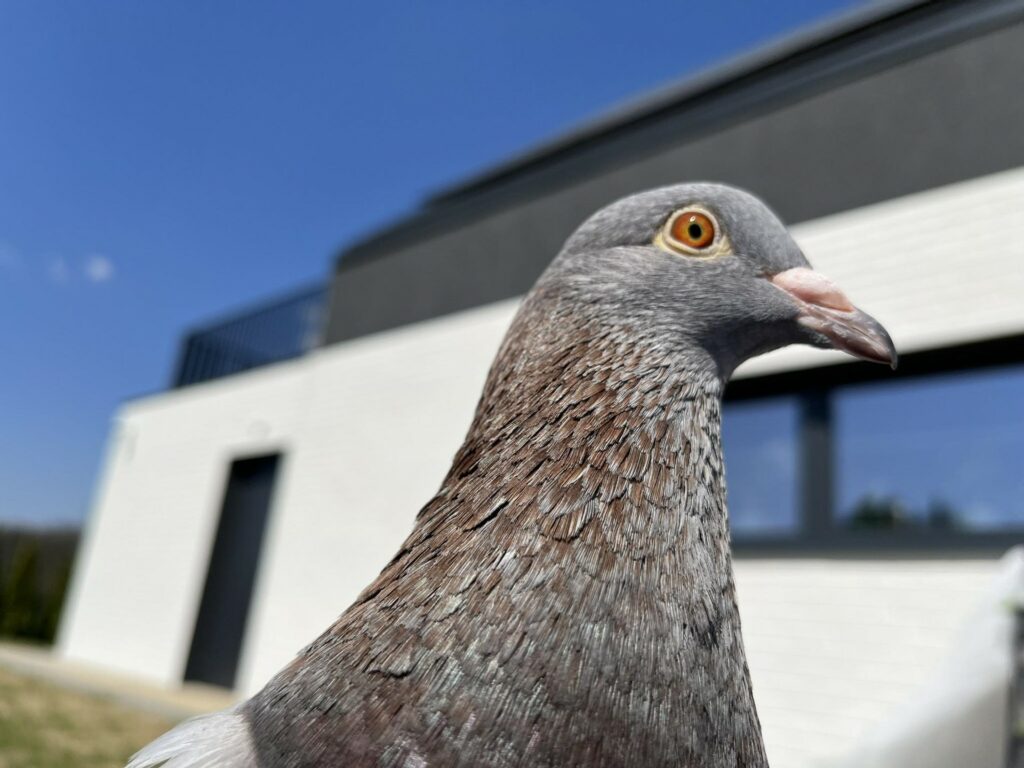
Homing Pigeons in Modern Times
Even in today’s technologically advanced world, homing pigeons continue to hold a special place in various cultural and sporting activities, as well as in conservation efforts.
Pigeon Racing and Competitions:
- Pigeon racing is a popular sport in many parts of the world, attracting enthusiasts who breed, train, and race pigeons over long distances.
- In these competitions, pigeons are released from a specific location, and the time it takes for them to return home is recorded. The pigeon that returns in the shortest time is declared the winner.
- Pigeon racing requires careful breeding and training, with fanciers (pigeon keepers) striving to develop birds with the best speed, endurance, and homing abilities.
- These competitions not only celebrate the incredible navigational skills of homing pigeons but also foster a sense of community among pigeon fanciers.
Use in Ceremonial Releases:
- Homing pigeons are also used in ceremonial releases at weddings, funerals, and public events.
- These releases are symbolic, often representing peace, love, or the journey of a loved one’s spirit.
- The pigeons used in these events are trained to return home after the release, ensuring their safety and well-being.
Conservation Status and Efforts:
- While domesticated homing pigeons are not considered at risk, the wild ancestors of these birds, the rock pigeon, face threats in certain areas due to habitat loss, pollution, and other factors.
- Conservation efforts are in place to protect their natural habitats and address the challenges they face in the wild.
- Education and advocacy play a vital role in these conservation efforts, raising awareness about the importance of pigeons in the ecosystem and promoting practices that contribute to their well-being.
In modern times, homing pigeons continue to be cherished for their beauty, intelligence, and incredible navigation skills. Whether it’s through racing, ceremonial releases, or conservation efforts, these remarkable birds remain an integral part of our cultural and natural heritage.
What is a Homing Pigeon? Caring for a Homing Pigeon
Providing proper care for a homing pigeon requires knowledge, commitment, and a genuine passion for these fascinating birds. From creating a suitable living environment to ensuring their health and wellbeing, every aspect of their care is crucial.
Necessary Supplies and Habitat:
- A spacious and secure loft or cage is essential to provide shelter and protection for your homing pigeon. It should be well-ventilated, dry, and safe from predators.
- Inside the loft, provide perches for the birds to rest on, and ensure there is enough space for them to move around and stretch their wings.
- Access to clean water is vital, so provide water dishes that are cleaned and refilled daily.
- A balanced diet, consisting of pigeon pellets, grains, and seeds, should be provided to ensure proper nutrition. Fresh fruits and vegetables can also be offered as treats.
- Sand or grit should be available for the pigeons to aid in digestion.
- Nesting materials, such as straw or wood shavings, should be provided for breeding pairs.
Training and Bonding with Your Pigeon:
- Spend time daily with your homing pigeon to build trust and strengthen your bond. Gentle handling and soft talking can help the bird become more comfortable with you.
- Training should start with short flights within the loft, gradually increasing the distance as the pigeon becomes more confident.
- Consistency is key in training. Establish a routine for feeding and flying, as pigeons thrive on predictability.
- Positive reinforcement, such as treats and praise, can be used to encourage desired behaviors.
Check my article about How Fast Can A Pigeon Fly?
Health Care and Common Issues:
- Regular health check-ups with an avian veterinarian are important to ensure your pigeon is in good health.
- Be vigilant for signs of illness, such as changes in behavior, appearance, or droppings. Common health issues in pigeons include respiratory infections, parasites, and nutritional deficiencies.
- Maintain a clean living environment to prevent the spread of disease. The loft should be cleaned regularly, and droppings should be removed daily.
- Ensure your pigeon receives a balanced diet and access to fresh water to promote good health.
- If any signs of illness are observed, seek veterinary care promptly to address the issue before it becomes more serious.
Caring for a homing pigeon is a rewarding experience, providing an opportunity to bond with these intelligent birds and learn about their unique behaviors and needs. With the right supplies, training, and health care, you can ensure a happy and healthy life for your feathered friend.
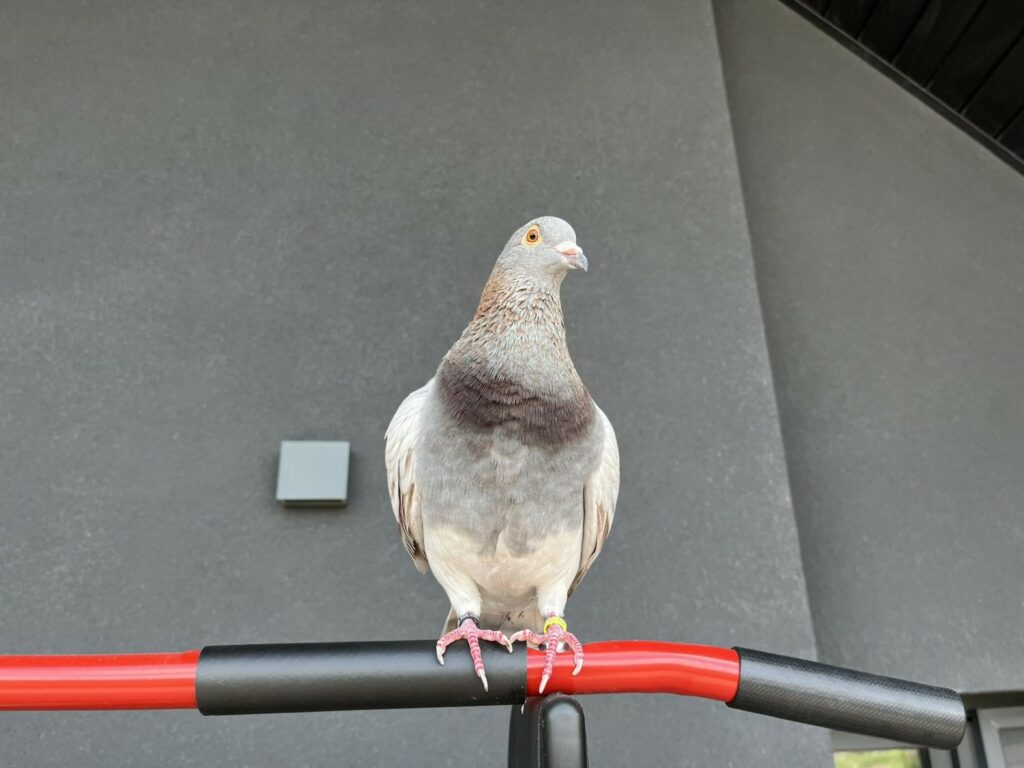
Final Thoughts
Throughout history, homing pigeons have captivated the hearts and minds of people around the world, serving as messengers, companions, and competitors. Their remarkable ability to find their way home over long distances has not only proven invaluable in times of war and necessity but has also established them as extraordinary creatures worthy of admiration and respect.
In modern times, these birds continue to play a significant role in various cultural and sporting activities, while also reminding us of the beauty and intelligence found in the animal kingdom. The care and attention required to raise and train homing pigeons highlight the deep connection that can be formed between humans and birds, fostering a sense of responsibility and compassion.
As we reflect on the journey of homing pigeons—from their historical significance to their biology, behavior, and the science behind their navigation skills—it becomes clear that these birds are more than just carriers of messages. They are symbols of resilience, loyalty, and the incredible capabilities of the natural world.
In the end, whether you are a pigeon fancier, a casual observer, or someone with a budding interest in these fascinating birds, the story of the homing pigeon serves as a testament to the wonders of nature and the enduring bond between humans and animals. And so, we celebrate the homing pigeon, not just for its ability to find its way home, but for its ability to find a special place in our hearts and our history.
What is a Homing Pigeon? FAQs
What is a homing pigeon?
A homing pigeon is a domesticated breed of the rock pigeon, known for its exceptional ability to find its way home over long distances. They have been bred and trained for their navigation skills and are often used in pigeon racing and ceremonial releases.
How do homing pigeons find their way home?
Homing pigeons are believed to use a combination of visual, magnetic, and olfactory cues to navigate. They may use the sun as a compass, the Earth’s magnetic field as a map, recognize familiar scents, and even use low-frequency sounds to find their way home.
How long have homing pigeons been used by humans?
The use of homing pigeons dates back thousands of years, with ancient civilizations like the Egyptians and Greeks using them for communication and other purposes. They have served in various capacities throughout history, including delivering messages during wartime.
How far can a homing pigeon fly?
Homing pigeons are capable of covering distances of up to 600 miles or more in a single day, depending on the weather conditions and the pigeon’s level of training and experience.
What is pigeon racing?
Pigeon racing is a sport in which homing pigeons are trained and then released from a specific location. The pigeons then race back to their home lofts, and the bird that returns in the shortest time is declared the winner.
Can homing pigeons be kept as pets?
Yes, homing pigeons can be kept as pets, but they require proper care, including a spacious and secure loft, a balanced diet, clean water, and regular health check-ups.
What is the lifespan of a homing pigeon?
The average lifespan of a homing pigeon is around 6 to 8 years, though this can vary depending on factors like care, diet, and living conditions.
How do homing pigeons contribute to conservation efforts?
While domesticated homing pigeons are not considered at risk, conservation efforts for their wild ancestors, the rock pigeon, aim to protect natural habitats and address challenges like habitat loss and pollution.
What role did homing pigeons play in the World Wars?
During both World War I and World War II, homing pigeons were used to carry critical messages across enemy lines, helping to coordinate military efforts and save lives. Some pigeons were even awarded medals for their service.
How do you train a homing pigeon?
Training a homing pigeon involves starting with short flights within the loft and gradually increasing the distance as the bird becomes more confident. Consistency, gentle handling, and positive reinforcement are key to successful training.

